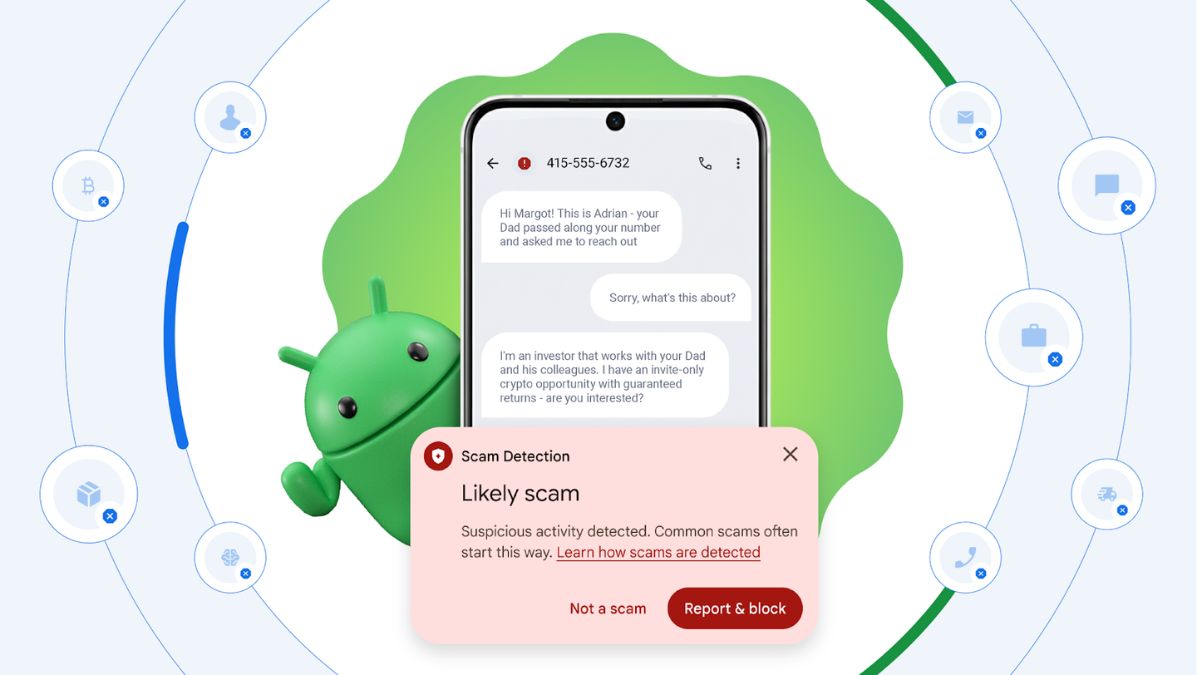As Cybersecurity Awareness Month comes to an end, Google is making a strong claim. It says that Android provides the most effective protection against mobile scams. The company says that Android blocks over 10 billion suspected malicious calls and messages every month and has stopped more than 100 million suspicious numbers from using RCS in just the past month. That sounds impressive, but does it really mean Android is safer than iOS?
According to Google, scammers have stolen over $400 billion globally in the past year, with AI making their attacks more convincing than ever. The company says Android has been using the best of Google AI to stay one step ahead. It uses layered protections such as spam filtering, scam detection, call screening, and on-device AI that can analyze messages and calls in real time to identify scams before users even interact with them.
Google’s data comes from a survey conducted with YouGov involving 5,000 smartphone users across the U.S., India, and Brazil. The survey found that Android users were 58% more likely than iOS users to say they had not received any scam texts in the past week. The difference was even higher for Pixel users, who were 96% more likely than iPhone users to report zero scam messages. On the other side, iPhone users were 65% more likely to say they had received three or more scam texts. Android users were also 20% more likely to describe their phone’s scam protection as “very effective.”

Google also highlighted two independent reports to support its claims. Counterpoint Research found that Android devices have AI-powered protection across ten categories, while iOS offered AI protection in only two. Another evaluation from Leviathan Security Group found that Android devices, led by the Pixel 10 Pro, offered the strongest built-in scam and fraud protection thanks to their advanced call screening and scam detection features.
So, is Google right? In many ways, yes. Independent reports and surveys do show that Android users receive fewer scam texts on average, and Android’s built-in AI protections seem to be more proactive in detecting and blocking fraudulent communication. Even a Malwarebytes study earlier this year found that iPhone users were slightly more likely to fall for scams than Android users.
However, the story is not that simple. Much of Google’s data is self-reported, and while surveys provide useful insights, they do not always reflect every user’s experience. Android’s ecosystem is also more fragmented. While Pixel and Samsung flagships get the full suite of AI-powered features, cheaper Android phones may not offer the same level of security or timely updates.
Another important point is how the term “suspected malicious calls” is used. Blocking billions of suspected threats every month sounds huge, but not all of them are necessarily real scams. Meanwhile, Apple’s closed ecosystem does help reduce malware risk and limits how apps interact with user data, though it may lack the same level of AI-driven filtering that Android is pushing.
Ultimately, Android’s advantage comes from Google’s deep integration of AI at the system level. Its real-time scam detection, spam filtering, and call screening features clearly make it more proactive in fighting scams. But that does not mean iPhone users are unsafe. Both platforms have strong security in their own ways. The biggest difference often comes down to how users behave.
No matter which phone you use, your own habits play the biggest role in keeping you safe. Avoid suspicious links, keep your phone updated, use official app stores, and enable spam filters. Google’s AI might be powerful, but no technology can fully replace user awareness.
Android may have taken the lead in scam prevention right now, but staying safe still requires a mix of smart technology and smarter users.










